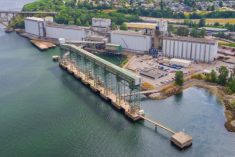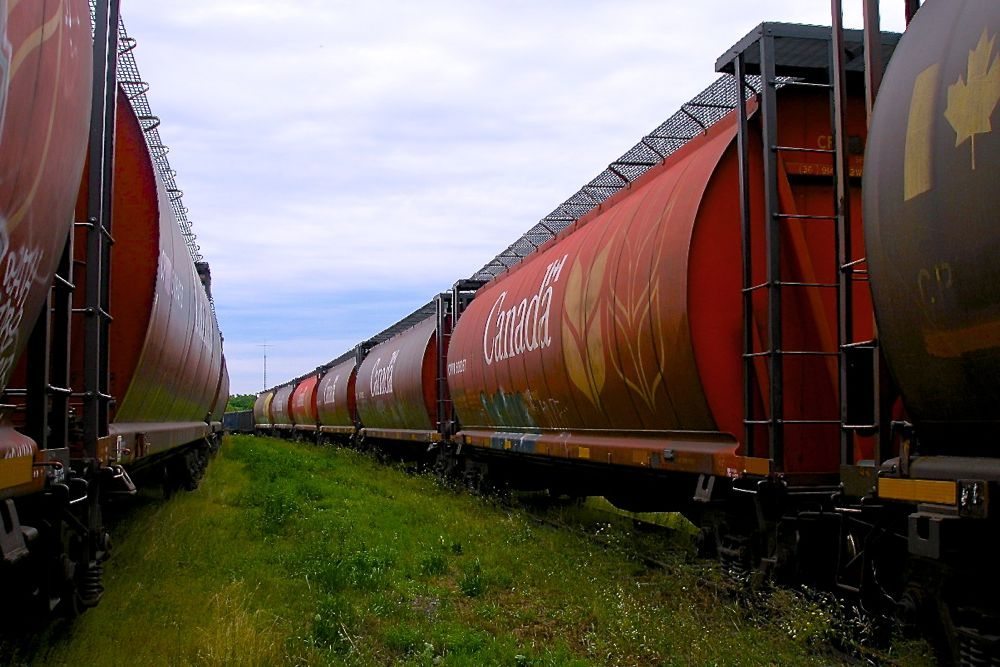The Canadian Transportation Agency has ordered the current owners of the Hudson Bay Railway to get repair work underway by July 3 at the latest.
The CTA — the quasi-judicial tribunal and regulator for the Canadian transport sector — on Wednesday granted a request filed by an unnamed representative of Manitoba’s provincial opposition New Democrats to order OmniTrax Canada’s Hudson Bay Railway Co. (HBR) to begin repairs on the line.
The rail line, which runs from the northwestern Manitoba communities of The Pas and Flin Flon northeast through Thompson to the Port of Churchill on Hudson Bay, hasn’t operated since May 2017, following flooding and washouts along the stretch between Amery (about 45 km northeast of Gillam) and Churchill.
Read Also

Senft to step down as CEO of Seeds Canada
Barry Senft, the founding CEO of the five-year-old Seeds Canada organization is stepping down as of January 2026.
OmniTrax declared force majeure and an indefinite suspension of operations on the line on June 9.
The application from the Manitoba NDP caucus alleged HBR is in violation of its level-of-service obligations and asked the CTA to order the company to compensate residents along the line for job losses and rising costs of goods, and to either repair the line or undertake the same transfer/discontinuance process other railways are required to follow.
The CTA found HBR has been in breach of its obligations since November 2017 and must “initiate repair of the rail line by July 3, 2018 and resume its operation as expeditiously as possible.”
HBR also must file progress reports on the line’s repair once a month starting Aug. 1 “until operation of the rail line has resumed.”
“This is the first order forcing HBR and OmniTrax to repair the line that any level of government has received,” provincial NDP leader Wab Kinew said in a release Friday.
The shutdown of the line and port “has caused severe and ongoing economic losses to the town, including significant job losses,” the party said in its release. “Families have been struggling to afford the rising costs of food, household items and building materials.”
In its ruling, the CTA noted the NDP representative’s argument that even if flooding was found to be a “force majeure” event — in which unforeseeable circumstances prevent a party from meeting its agreed-upon obligations — it would only entitle HBR to claim a “reasonable pause” in operations, not to discontinue service altogether.
The NDP representative said OmniTrax in July last year claimed the damage could be repaired by the end of October that year for between $20 million and $60 million. However, the party rep was quoted as saying in the ruling, “a more fulsome investigation” might have found another cost estimate to cover the “immediate” repairs needed.
The CTA, citing an “undisputed” report by AECOM on the condition of the line, found “immediate” repairs include 21 track washouts, a culvert washout, two bridges with washout damage, two with “other” damage and one with heaving, plus three “unstable areas.”
Other “immediate but non-essential” repairs, the CTA said, include 33 culvert sites to be replaced or repaired and 11 with washout damage, 46 wooden box-type culverts to be replaced, eight bridges in need of repair or “further investigation” and three “unstable areas.”
However, the agency said, HBR claims it “cannot be compelled to bankrupt itself in order to provide reasonable service” and its service obligations “must be tempered by economic considerations.”
HBR cited precedents including a 2017 CTA case, brought by Univar Canada against Canadian Pacific Railway (CP), over the railway’s level-of-service obligations following a fire damaging a rail bridge leading to Univar’s Richmond, B.C. plant.
In the Univar case, the agency said it accepted that a force majeure event could make it impossible for a railway to provide service for “a period of time it termed a reasonable pause.”
However, the agency added, it “specifically rejected the notion that a railway company can be permanently relieved of its service obligations without following the transfer and discontinuance process.”
Any rail company that doesn’t avail itself of the transfer and discontinuance process, the CTA said, “has ongoing obligations… including service obligations.” HBR thus is “not permanently relieved from its level of service obligations” as they relate to the damaged line.
The CTA, referring again to the AECOM report, “which HBR itself commissioned,” found the Hudson Bay line could have been returned to operations for the “safe passage of light loaded trains” in November last year, thus the period of “reasonable pause” runs only until then.
The agency said it doesn’t have authority to order HBR to compensate other affected parties for expenses they incurred after the line was shut down.
It temporarily had such authority, it noted, when the Fair Rail for Grain Farmers Act was in effect from May 2014 until August 2016, and it has such authority again after the passage of the Transportation Modernization Act into law on May 23 this year.
An order for HBR to repair the line, however, is “clearly warranted in the circumstances of an ongoing service breach.”
The federal government on May 30 announced a deal in principle for the sale of the Hudson Bay line and Churchill port facilities to a buying group including Toronto investment firm Fairfax Financial Holdings; Regina pulse crop processor AGT Food and Ingredients; and Missinippi Rail Partners, a joint operation of Missinippi Rail Limited Partnership and OneNorth, representing northern communities in Manitoba and Nunavut. That deal has yet to be finalized.
Denver-based OmniTrax has owned the port and rail line since 1997. The rail line, completed in 1929, and the port facility, built by 1931, were set up to serve northern communities and provide an alternate shipping route into and out of Western and central Canada.
From a grain export perspective, railing grain out of certain areas of Saskatchewan and Manitoba up and out through Churchill instead of east to Thunder Bay is believed to shave up to three days off voyages to some ports in Western Europe.
But the port’s grain handle declined following the deregulation of its main customer, the Canadian Wheat Board. OmniTrax shut down the port facility and laid off its staff before the 2016 grain shipping season.
The port’s ice-limited shipping season, typically July through October, has been a benefactor of global warming in recent years, but warmer weather also makes the rail line, much of which is built on permafrost, less stable. — AGCanada.com Network





















